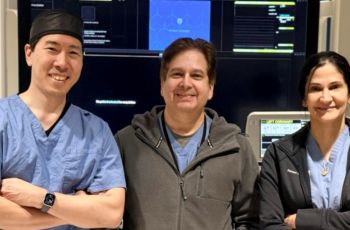WASHINGTON (Jan. 27, 2020) — The rate of recovery and a patient’s length of stay at nursing and rehabilitation facilities are associated with a patient’s mobility and their ability to provide self-care when they are discharged following hip fracture surgery, according to a new study from the George Washington University (GW), published in JAMA Network Open.
The authors of the study suggest that a care team should prioritize identifying a patient’s recovery trajectory early enough in care to promote the best possible outcomes and allocate resources efficiently.
Medicare is shifting from payment for post-acute care services based on the volume provided to a payment system based on value as determined by patient characteristics and functional outcomes, placing responsibility on facilities to determine what a patient’s care will entail. Nursing and rehabilitation facilities are responsible for ensuring that a patient’s therapy time and length of stay match their needs. This formula of appropriate patient care matched with patient needs is critical to optimizing functional outcomes and manage costs of rehabilitation.
“This study is very timely,” said Alison Cogan, PhD, OTR/L, adjunct assistant professor of health, human function, and rehabilitation sciences at the GW School of Medicine and Health Sciences (SMHS) and first author on the study. “There is a lot of pressure to be cost effective in clinical care across the board and maintain appropriate rehabilitation time for patients.”
The researchers provided a retrospective analysis of data on patients from four inpatient rehabilitation facilities and seven skilled nursing facilities in the United States who received rehabilitation services for hip fracture and who had Medicare fee-for-service as their primary payer. The team categorized the patients into nine recovery groups based on low, medium, and high therapy minutes per day and low, medium, or high rate of functional gain per day. They measured the groups for functional mobility independence and self-care capabilities at the time each patient was discharged.
Cogan and the team found that rate of recovery and length of stay in skilled nursing and rehabilitation facilities were associated with mobility and self-care outcomes at discharge following hip fracture surgery. In particular, the authors found that for medium gain patients, being discharged from a facility in under 21 days may transfer additional burden of care to family and caregivers, home health, and outpatient services, because these patients typically achieve functional independence at around 28 days in rehab.
“The inclination is typically to give a patient more therapy per day,” said Trudy Mallinson, PhD, associate dean for health sciences research at SMHS, director of the Advanced Metrics Lab, where the study was produced, and senior author of the study. “But perhaps more isn’t always the right thing to do. Maybe a longer stay is the right thing for some patients.
“This study is a first step. It’s a way to start thinking about how we can help clinicians, patients, and caregivers think about what amount of therapy is appropriate for each patient’s unique situation.”
The next steps, according to the team, are to study with a larger national sample and also to apply the same methodology to other questions for patients with other conditions requiring rehabilitation services, such as stroke and joint replacement.
The study, titled “Association of Length of Stay, Recovery Rate, and Therapy Time per Day with Functional Outcomes After Hip Fracture Surgery,” is published in JAMA Network Open.


